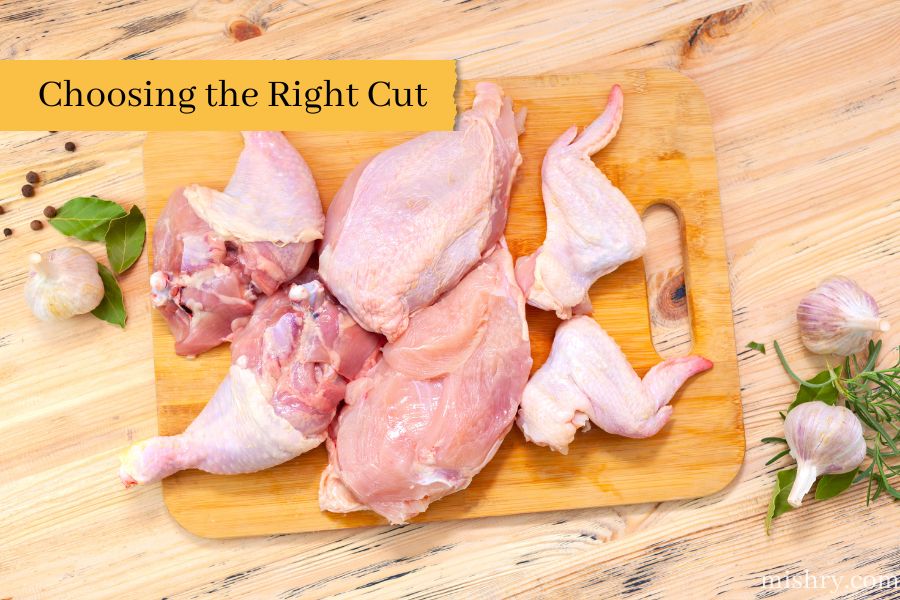Roasting meat to perfection is an art that brings out the best flavors and textures in cuts like beef, pork, lamb, and poultry. Whether you’re preparing a meal for a special occasion or simply want to elevate your everyday cooking, mastering the art of roasting can make a big difference. In this guide, we’ll walk you through the essential steps on How to Roast Meat Perfectly, Tips for seasoning, resting, and slicing your roast to ensure juicy, flavorful results every time.
Read Detailed Guide: The Art of Roasting Meat: Tips on Seasoning, Resting & Slicing
The Importance of Seasoning
Seasoning is the foundation of a great roast. Proper seasoning enhances the natural flavors of the meat and creates a delicious crust on the surface. Here are a few tips for getting the most out of your seasoning:
1. Salt is Key
Salt is essential for flavor and for drawing out the meat’s natural juices. Use coarse salt, such as kosher or sea salt, and apply it generously to the entire surface of the meat. Salt the meat at least 30 minutes before roasting to allow the flavors to penetrate. For larger cuts, consider salting several hours in advance, or even overnight.
2. Add Herbs and Spices
Beyond salt, herbs and spices add depth and character to your roast. Popular choices include rosemary, thyme, garlic, pepper, and paprika. Fresh herbs like rosemary and thyme bring an aromatic quality, while garlic and black pepper add warmth and bite. Create a spice rub by mixing these ingredients with oil and massaging it into the meat for an even coating.
3. Marinades for Added Flavor
If you’re looking for more intense flavors, consider using a marinade. Marinades work well with tougher cuts of meat and can be tailored to any flavor profile. Classic marinade ingredients include olive oil, vinegar, soy sauce, and various herbs and spices. Allow the meat to marinate for several hours or overnight for best results.
Temperature and Cooking Time
One of the biggest challenges in roasting meat is achieving the perfect internal temperature. Here are some tips to ensure your roast reaches the ideal doneness:
1. Preheat the Oven
Always preheat your oven to the desired temperature before placing the meat inside. A hot oven helps create a good sear on the outside, which locks in the juices and enhances the flavor.
2. Use a Meat Thermometer
A meat thermometer is a foolproof way to check if your roast is cooked to perfection. Insert the thermometer into the thickest part of the meat, avoiding any bones, and follow these internal temperature guidelines:
- Beef: Medium rare (135°F), Medium (145°F), Well done (160°F)
- Pork: 145°F (with a 3-minute rest)
- Lamb: Medium rare (135°F), Medium (145°F), Well done (160°F)
- Poultry: 165°F (for white meat), 175°F (for dark meat)
3. Low and Slow for Tenderness
For larger cuts of meat, a low and slow cooking method helps break down collagen and ensures tenderness. Set your oven to a lower temperature (around 325°F) and cook the meat for a longer time. This method is ideal for cuts like beef brisket, pork shoulder, and lamb leg.
Resting the Meat
Resting meat after roasting is a crucial step that many home cooks overlook. Resting allows the juices to redistribute within the meat, resulting in a more tender and flavorful roast. Here’s how to do it:
1. Cover and Let It Sit
After removing the meat from the oven, cover it loosely with foil and let it rest for 10 to 20 minutes, depending on the size of the cut. This resting period prevents the juices from spilling out when you slice into the meat, keeping it moist and flavorful.
2. Use a Cooling Rack
For optimal results, place the roast on a cooling rack set over a baking sheet. This setup allows air to circulate around the meat, helping it cool evenly without steaming the bottom, which can soften the crust.
3. Resting Time by Meat Type
Here’s a quick guide on resting times for various meats:
- Steak and Smaller Cuts: 5-10 minutes
- Roast Beef and Larger Cuts: 15-20 minutes
- Whole Chicken or Turkey: 20-30 minutes
Slicing Techniques for Maximum Juiciness
Proper slicing is the final step in achieving the perfect roast. The way you slice the meat can make a big difference in the texture and juiciness of each bite.
1. Slice Against the Grain
To keep each bite tender, always slice against the grain of the meat. The “grain” refers to the direction of the muscle fibers. Slicing against the grain shortens these fibers, making the meat easier to chew and more tender.
2. Use a Sharp Knife
A sharp knife is essential for clean, precise cuts. Serrated knives work well for tougher meats like roast beef, while a carving knife is ideal for poultry. Sharp cuts prevent tearing and help preserve the texture of the meat.
3. Keep Slices Thin for Delicate Cuts
For delicate cuts like tenderloin or roast chicken, aim for thinner slices to highlight the tenderness. For larger, tougher cuts like brisket or pork shoulder, slightly thicker slices work best to retain moisture and texture.
Popular Roasting Techniques
Here are some popular roasting techniques to try based on the type of meat you’re preparing:
1. Sear-Roasting
This method involves searing the meat in a hot pan to create a crust, then transferring it to the oven to finish cooking. Sear-roasting is great for smaller cuts like steak or pork tenderloin, as it locks in the juices and adds flavor.
2. Slow-Roasting
Slow-roasting at a low temperature allows tougher cuts of meat to cook slowly, making them tender and juicy. This technique is ideal for cuts like prime rib, brisket, and lamb shoulder, creating a melt-in-your-mouth texture.
3. Herb-Crusted Roasting
For extra flavor, apply a herb and spice crust to your roast before cooking. Use a mixture of fresh or dried herbs, garlic, and breadcrumbs to coat the meat. This technique works well with lamb, beef, and poultry, adding a flavorful crust that enhances the dish.
Serving Suggestions for Roast Meat
Roasted meat pairs well with a variety of sides, from simple vegetables to rich gravies. Here are a few classic options:
- Roasted Vegetables: Carrots, potatoes, and Brussels sprouts complement the rich flavor of roast meat.
- Gravy: Use the pan drippings to make a savory gravy that enhances the flavor of the meat.
- Mashed Potatoes: A creamy, comforting side that balances the savoriness of roasted meat.
Final Thoughts
Mastering the art of roasting meat requires attention to detail at every step, from seasoning to slicing. With the right techniques, you can transform a simple cut of meat into a flavorful, tender roast that impresses at any meal. Experiment with different seasonings, cooking temperatures, and slicing methods to discover what works best for each type of meat. Happy roasting!
Conclusion
Roasting meat to perfection takes practice, but with these tips, you’re well on your way to achieving delicious results. From seasoning and resting to slicing, each step plays a crucial role in creating a juicy, flavorful roast. Whether it’s a special occasion or a weeknight dinner, these techniques will help you make the most of your roast every time.









